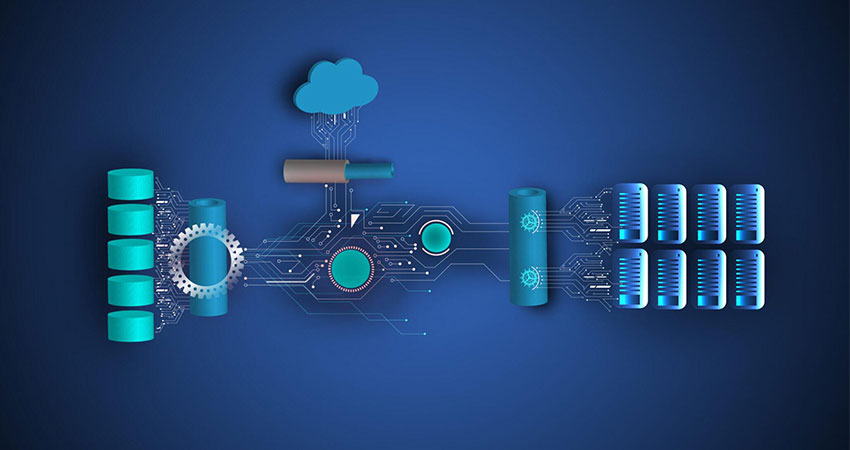Modern ecommerce brands are operating in an environment unlike any we’ve ever seen.
As new technologies, communication channels and ways to buy rapidly emerge, the goalposts keep shifting along with growing consumer expectations. Even some of the savviest ecommerce companies have found it tricky to keep up.
Many startups and established ecommerce businesses are now choosing to think carefully about the software systems they have in place, and whether they’re really the best option for staying ahead of the competition and enjoying success into 2022 and beyond.
But ecommerce brands haven’t always had such a dilemma on their hands. A decade or even five years ago, the majority of them made a straightforward decision to sign up with a monolithic single-vendor ecommerce platform (including ERPs) offering all-in-one solutions for doing business online.
The One-Size-Fits-All Solution
These monoliths allowed businesses to manage every element of the ecommerce experience, from showcasing products and managing stock to processing transactions and organizing shipping, on a handy centralized system.
While the ecommerce market was still taking off, monoliths offered businesses a simple and clear way to manage their front and back end. The trouble is, they were originally created for ecommerce brands that primarily reached customers via static, desktop computers. Of course, things have changed.
Mobile commerce has skyrocketed in recent years. In 2016 it started to have a significant impact, with 31% of all sales online made via mobile. Fast forward to 2021, and 54% of all sales are expected to come from mobile, according to BigCommerce.
It’s now become clear that to successfully compete online, brands must be able to flex and adapt to market trends triggered by mobile technology. The “one size fits all” nature of monolithic platforms, including traditional ERPs, prevents brands from doing exactly that.
Monolithic architecture is notoriously inflexible and difficult to scale, as any business that has tried to integrate it with other tech platforms and APIs can attest. Increasingly, brands are growing tired of getting big bills for relatively small changes that take months to achieve, and of slowdowns caused by crashes and other problems that disrupt day-to-day business.
Brands Admit to Feeling Held Back
In fact, leading brands across the U.S. are now openly admitting that being locked into a service from an ERP vendor is holding them back.
Research from July commissioned by Brightpearl found a whopping 90% of U.S. brands with revenue between $5 million-$50 million are concerned that a single-vendor ERP approach to ecommerce is limiting their ability to quickly deploy better shopping experiences, keep up with customer expectations and sell more.
What’s more, 71% of those same merchants, and 52% of those north of $50 million, agree that their current ERP makes it nearly impossible to integrate newer/better ecommerce technology from other vendors at the pace they would like. It’s a similar story in the UK, with half of all British firms saying the same thing.
But if monolithic ecommerce platforms have had their day, what’s taking their place? It’s all about microservices.
A microservices architecture is a set of loosely coupled services that collaborate to create an operations system. Microservices are modular, connecting through API gateways to create a flexible, scalable suite of services which run independent of each other.
A Move Toward Microservices
Microservices has become a buzzword in recent years, but it’s anything but a fad. Major players such as Netflix, eBay, Amazon and Spotify have switched from monolith to microservice architecture, and swathes of smaller businesses are doing the same.
Brightpearl’s research revealed that 52% of U.S. merchants in the $5 million-$50 million range, along with 41% of those above $50 million, believe the adoption of APIs and microservices is “much more urgent” over the next 12 months compared to the previous year.
That’s because microservices-based systems enable businesses to adapt to new innovations like mobile commerce quickly and easily. Brands can pick and choose the best-in-breed apps and solutions that work for them, switching and adding as their business grows.
Because the various components in a microservices system operate independently, innovations and new integrations are quick and easy. Initial implementation is much quicker compared to monoliths (days/weeks as opposed to months/years) and the systems are designed to adapt and scale as businesses do.
The open API approach of a microservice architecture often means companies can easily switch things up to boost customer experience.
The Era of Scalable Commerce
For fast-growing ecommerce brands, being able to give customers the immersive, modern shopping experiences they crave is the secret to staying ahead of the competition. For that reason, microservices are replacing monoliths at such an astonishing speed.
Modern ecommerce businesses are now faced with a choice. They can stick with the one-size-fits-all approach they’ve always known or leap into a new era of scalable commerce, embracing the microservices that go hand-in-hand with it.
Derek O’Carroll is the CEO of Brightpearl

